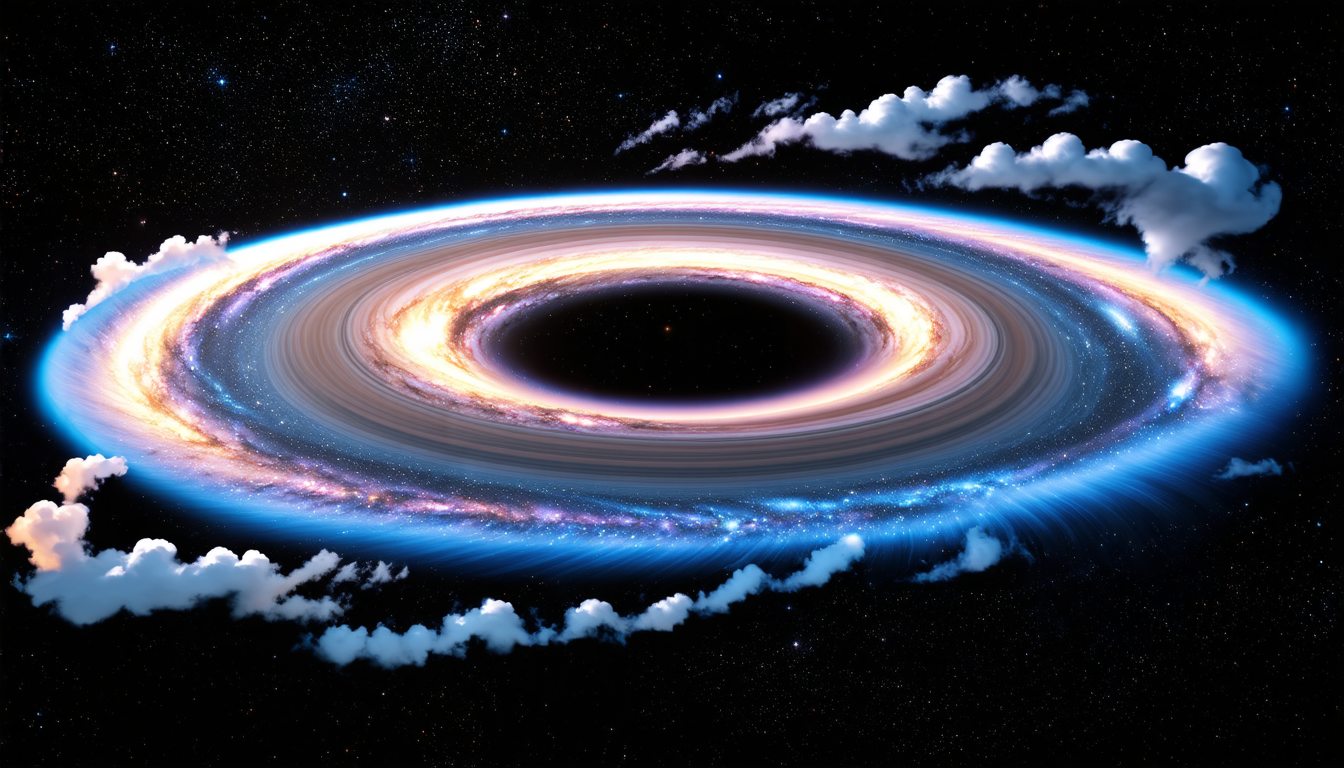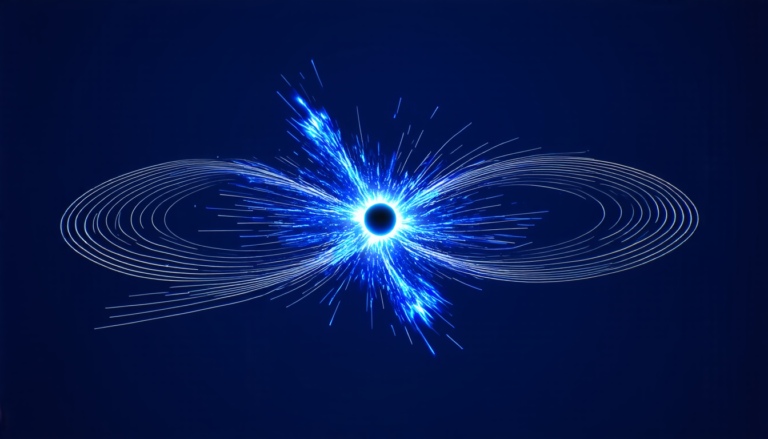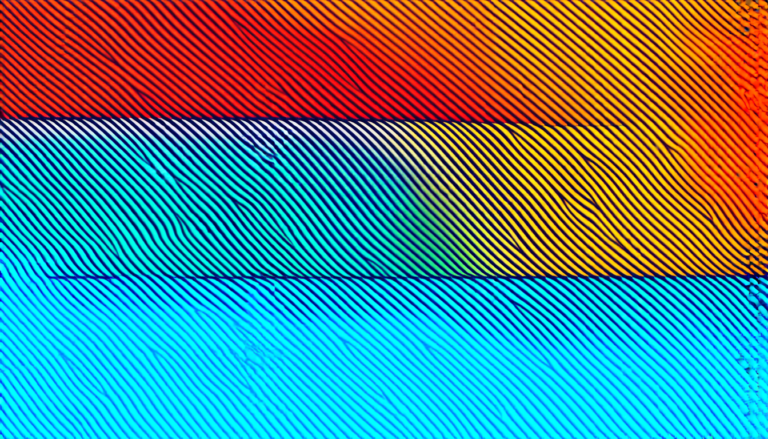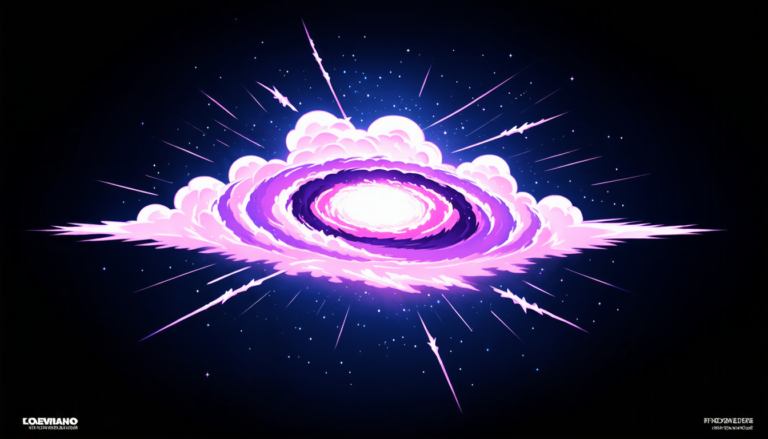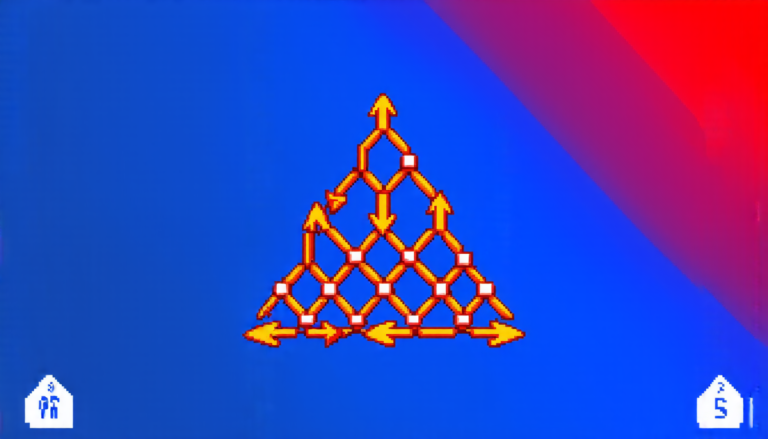Friday 25 July 2025
A newly formed supermassive black hole at the center of a distant galaxy has been observed, providing valuable insights into the mysteries of black hole formation and evolution. The discovery was made using data from the James Webb Space Telescope (JWST) and other observatories.
The galaxy in question is known as Pieter van Dokkum’s ∞galaxy, named after its unique structure, which consists of two ringed nuclei with a supermassive black hole situated between them. The system is thought to be the result of a collision between two disk galaxies with massive bulges, and the new study suggests that the supermassive black hole at its center formed from shocked and compressed gas at the site of the collision.
The researchers used JWST’s Near-Infrared Spectrograph (NIRSpec) instrument to collect high-resolution spectra of the galaxy’s central region. By analyzing these data, they were able to detect signs of intense star formation and ionized gas in the vicinity of the black hole. This suggests that the black hole is actively accreting material from its surroundings, which would explain its observed mass.
The study also found evidence for the presence of two other supermassive black holes, one located at each nucleus of the galaxy. These black holes are thought to have formed independently, perhaps through the merger of smaller galaxies or the collapse of massive stars. The fact that they both exhibit similar characteristics to the central black hole suggests that they may have undergone a similar formation process.
The discovery of this newly formed supermassive black hole provides important clues about the mechanisms by which these objects form and evolve. It also highlights the potential for JWST to study the properties of black holes in distant galaxies, providing new insights into the role they play in shaping galaxy evolution.
One of the most intriguing aspects of this finding is its implications for our understanding of black hole formation. Traditional theories suggest that supermassive black holes form through the merger of smaller black holes or the collapse of massive stars. However, this study suggests that it may be possible for them to form directly from the collapse of gas in the centers of galaxies.
This new understanding has significant implications for our understanding of galaxy evolution and the role played by supermassive black holes within them. It also highlights the importance of continued observations with JWST and other next-generation telescopes, which will allow us to study these objects in greater detail and gain a deeper understanding of their properties and behaviors.
Cite this article: “Unveiling the Birth of a Supermassive Black Hole”, The Science Archive, 2025.
Black Holes, Galaxy Evolution, James Webb Space Telescope, Supermassive Black Holes, Pieter Van Dokkum’S ∞Galaxy, Star Formation, Ionized Gas, Nirspec, Galaxy Collision, Cosmology.

